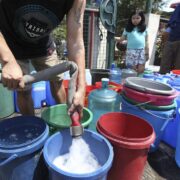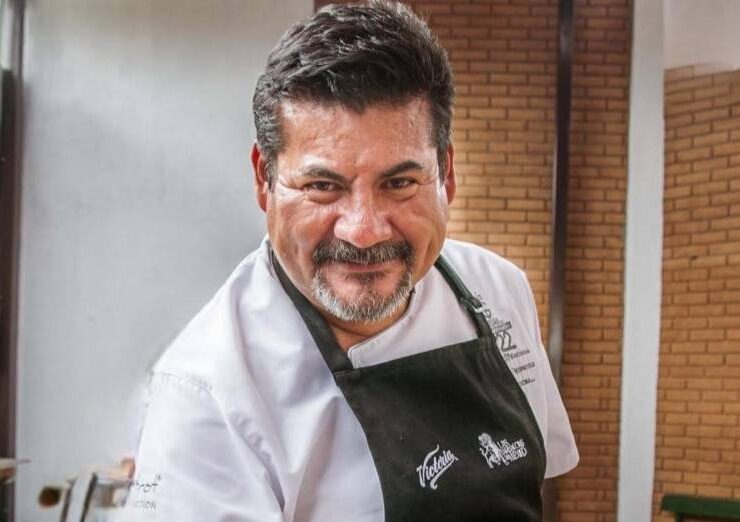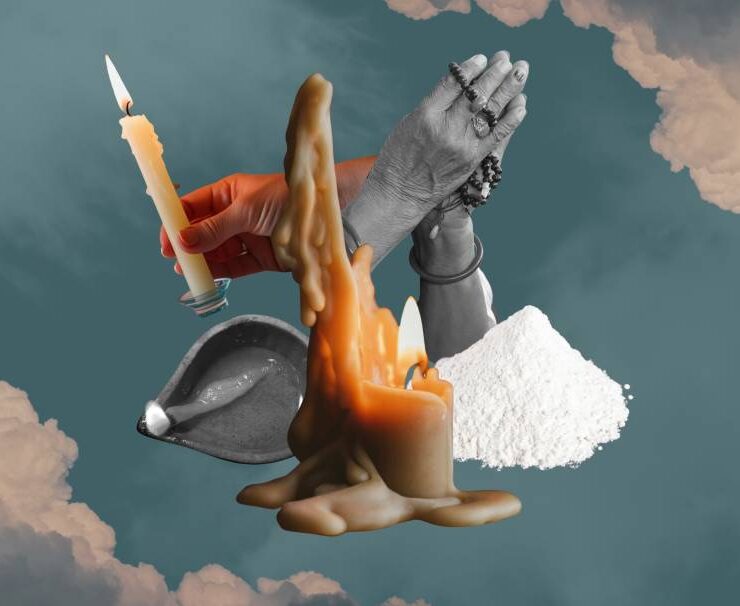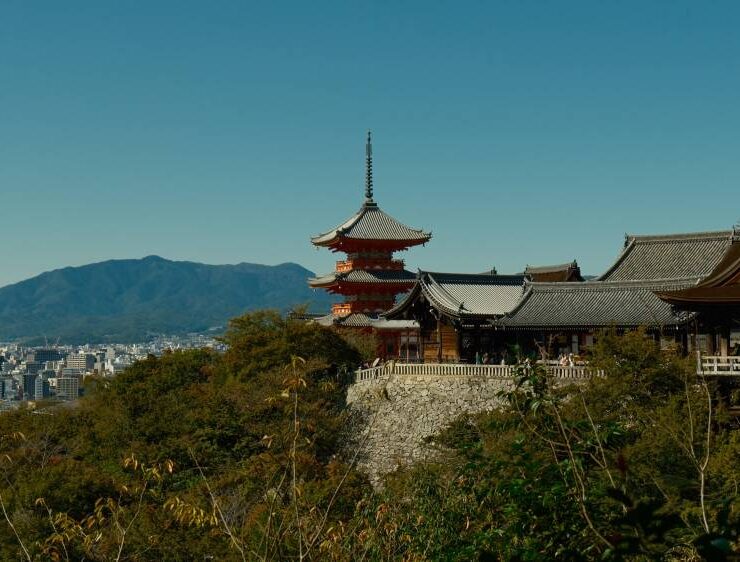Tasting Vancouver’s soul in Granville Island
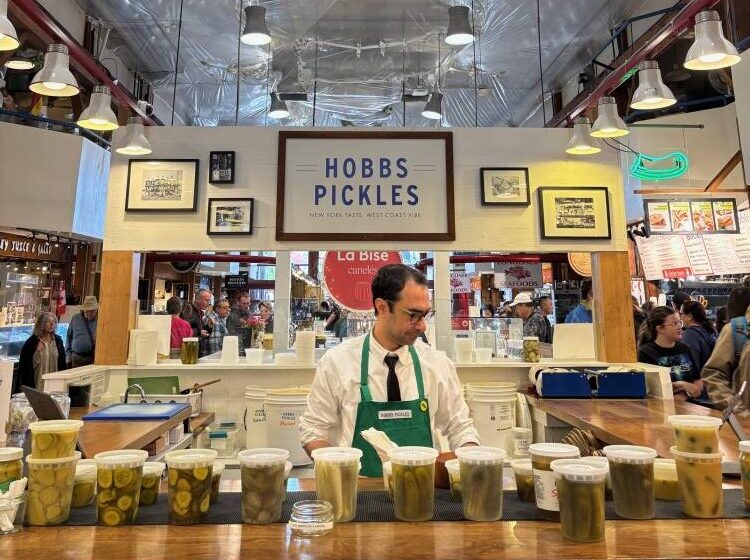
There’s a moment on Granville Island when the air seems to shift. One minute, you’re standing by a cement plant that hums like an echo from the past. The next, you’re surrounded by warm sourdough loaves, soft jazz from a busker, and the steam swirl of a chai latte in your hands. It’s disorienting in the best way—like walking into a memory that isn’t yours but feels familiar.
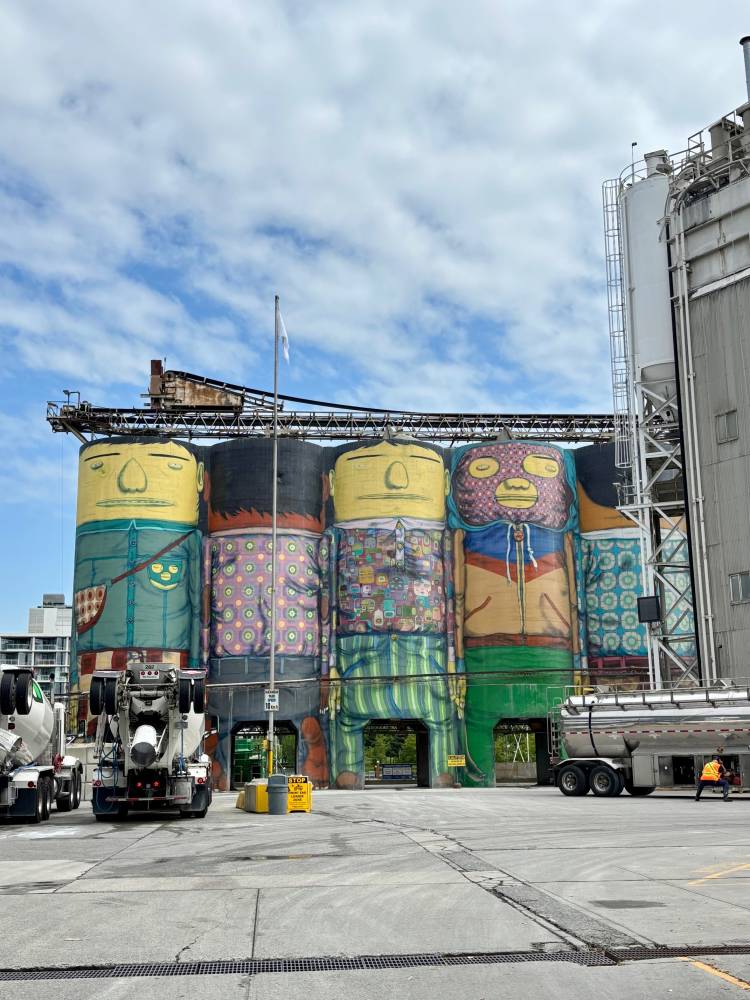
Thanks to Air Canada, which launched its nonstop direct Manila-to-Vancouver route in April (for bookings, visit aircanada.com), a small group of Filipino editors—including this writer—crossed the Pacific in just under 12 hours, stepping off the plane and straight into one of North America’s most underrated food cities (with a quick side trip to Seattle, Washington, another foodie haven—but that’s for another story). On our first full morning in Vancouver, we were introduced to the city not through landmarks or history books—but through flavor.

Our itinerary was led by Vancouver Foodie Tours, one of the city’s most respected culinary guides, known for turning public markets into tasting menus and city streets into storytelling sessions. At the helm was Anjela, a Parañaque-born Filipino-Canadian whose warmth and bright smile matched her knowledge. We were starting at Granville Island, “because this is where Vancouver reveals itself,” she said.
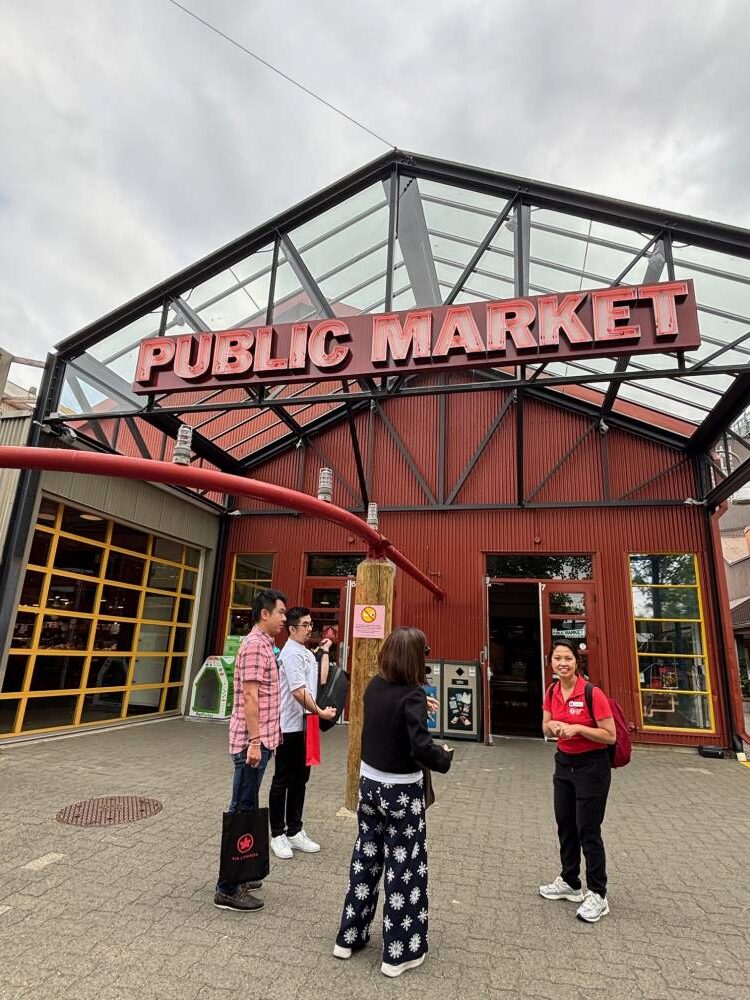
She was right. Granville Island isn’t just a stop. It’s a full immersion.
That stuck with me. Because Granville Island, in many ways, feels like Vancouver distilled: layered, inclusive, rooted, and constantly reinventing itself.

From sandbar to culinary sanctuary
Before the donuts, before the cheeses, before the artisan lemon squares with cult followings, this island was known to the Squamish and Musqueam people as a place of gathering. At low tide, the land offered mussels, oysters, and seaweed—nature’s buffet. The phrase “when the tide is out, the table is set” carries weight here. You can taste it in the quiet reverence with which locals speak of food.
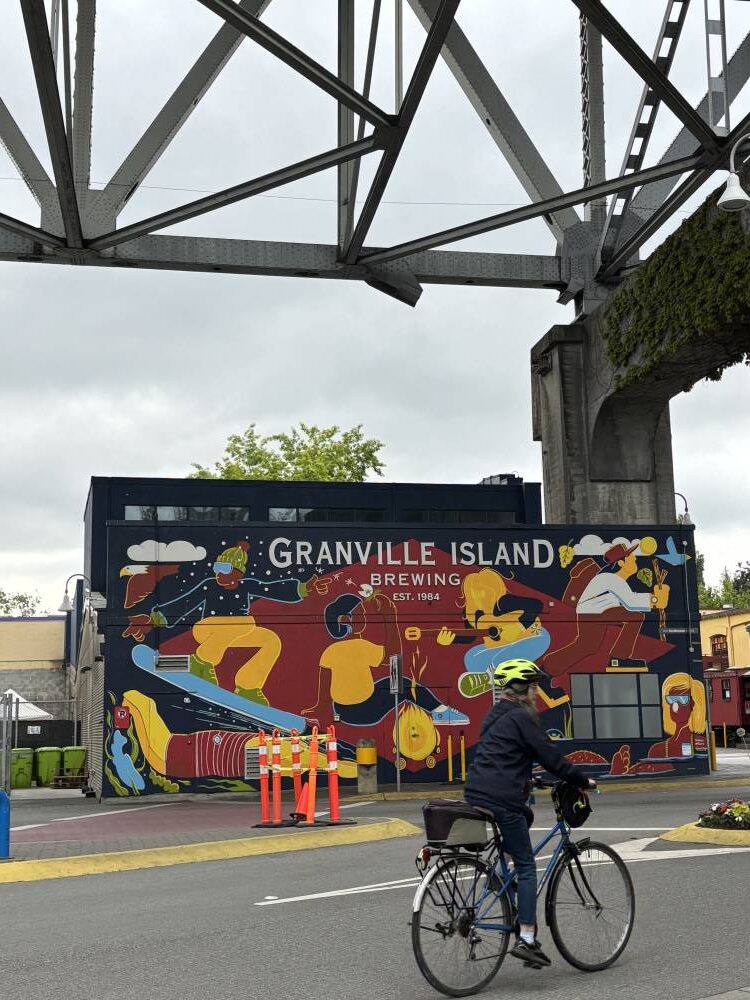
In the early 1900s, colonial industry arrived, reshaping the shoreline. The cement plant still stands today—an active reminder that reinvention doesn’t always mean erasure. By the 1970s, long after the factories had fallen silent, urban planners reimagined the island not as blank canvas but as a living palimpsest.
(Near the market is a cluster of factory silos, quite Insta-worthy, as they’ve been transformed into 70-ft art canvases by a duo of Brazilian mural artists, commissioned for the 2014 Vancouver Biennale.)
Old warehouses became theaters. Net lofts became bakeries. The scent of iron was replaced by the smell of smoked salmon and cinnamon.
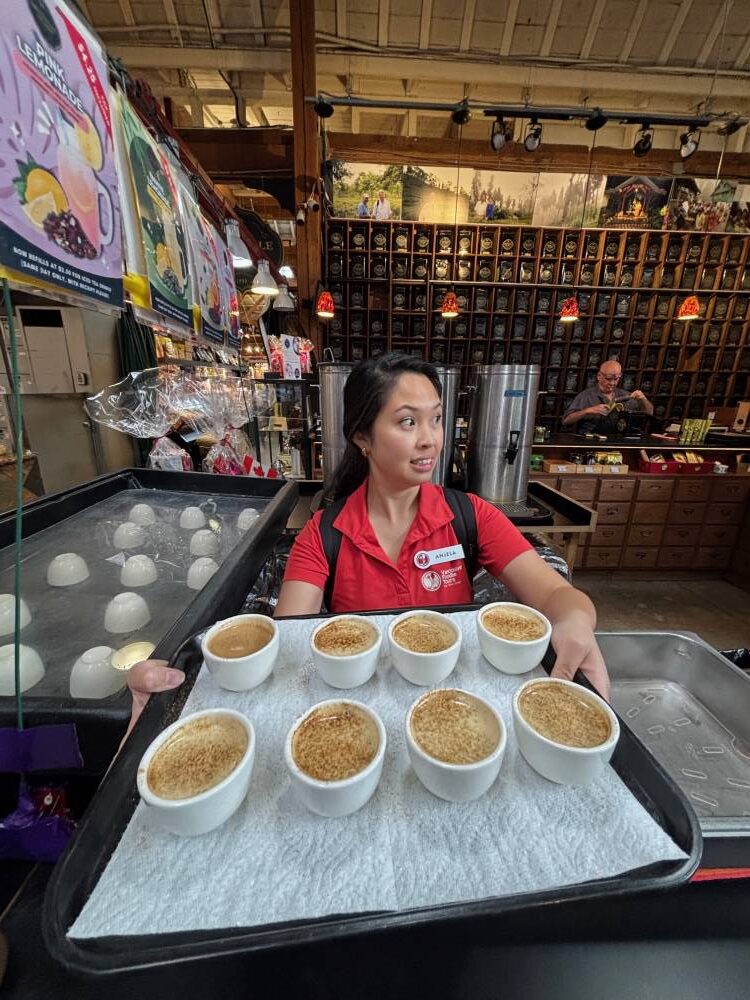
Sips and steam
At the Granville Island Tea Company, nestled inside the Public Market, I sipped chai so silky and spiced, it warmed more than just fingers.
A few stalls away, JJ Bean gave us brews that jolted us lovingly awake.

And then there was Lee’s Donuts—pillowy, nostalgic, and lined with people who clearly knew what they were waiting for. The glazed was everything you might imagine a sweet treat should be: deeply satisfying.
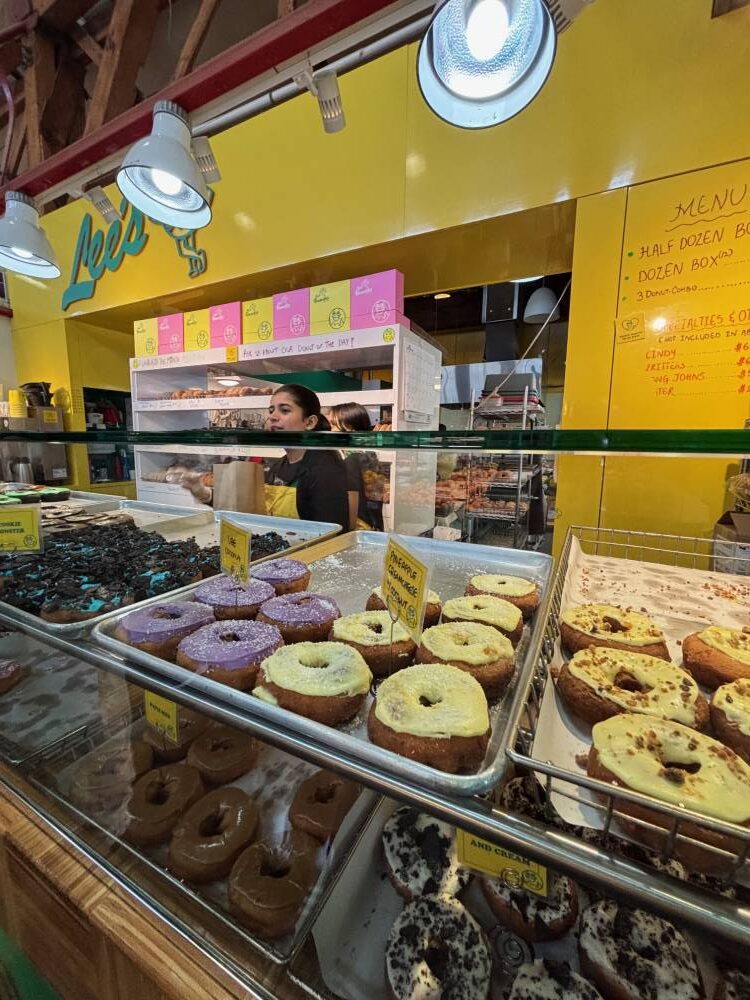
A beloved Vancouver institution since 1979, Lee’s was acquired in 2018 by a Filipino couple, Allan and Celine Bacani. The young entrepreneurs have expanded the mom-and-pop bakery into several locations. (Our group also made a quick stop at Armando’s Finest Quality Meats, a local butcher, founded by Allan’s father.)

Anjela guided us toward the water, suggesting a spot for a dockside picnic for our future visits.
At Terra Breads, we were drawn to the heady smell of freshly baked loaves and other goodies. Founded in 1993, the bakery has won multiple awards—not just for their bread, but for their ethos: fermentation, community, zero waste.
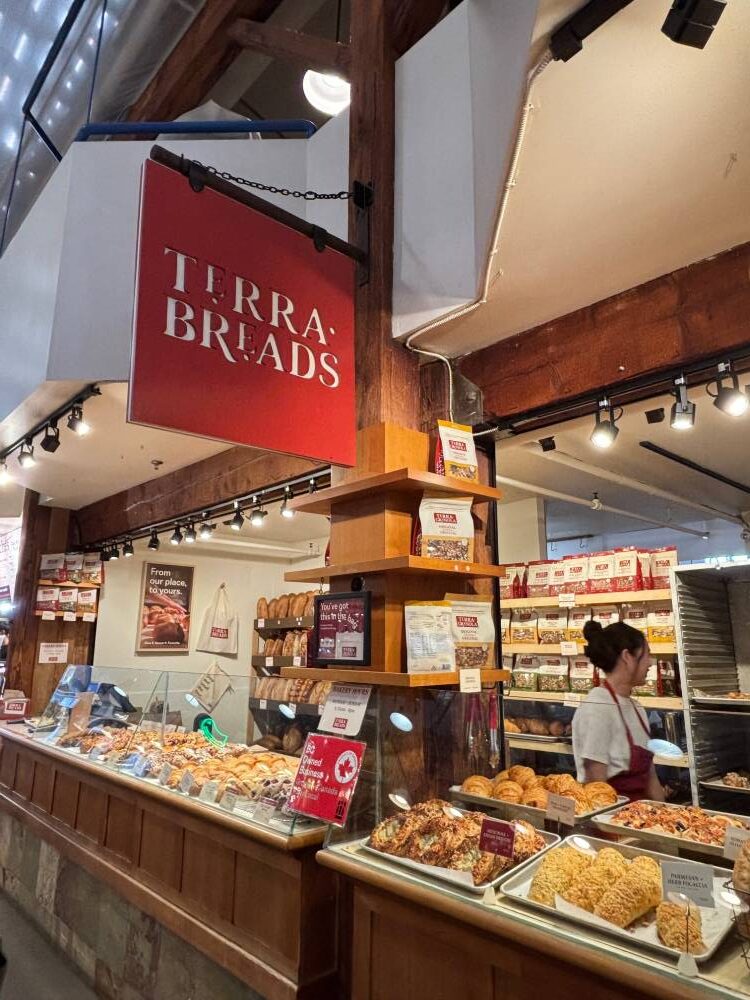
Then came Benton Brothers, where cheese was not just sold but explained, reverently. Anjela laid out a sampling of the finest local cheeses the deli had on offer, starting with a young curd, which vanished on the tongue, followed by a tangy aged cheddar that felt like a punchline with perfect timing.

Oyama Sausage Co. was a sensory ambush: salamis, prosciuttos and cold pâtés in shades of umami I didn’t know existed. Across the way, Hobbs Pickles offered the essential counterpoint—sharp, briny, crisp. Every walking picnic needs tension. Hobbs provides it beautifully.

One of this writer’s personal favorites was Longliner Seafoods, founded in 1978 by a commercial fisherman, and is now run by three generations espousing sustainable longline fishing. The maple syrup-glazed candy salmon nuggets is a must, best enjoyed onsite, though they also have small vacuum-sealed packs to take home.
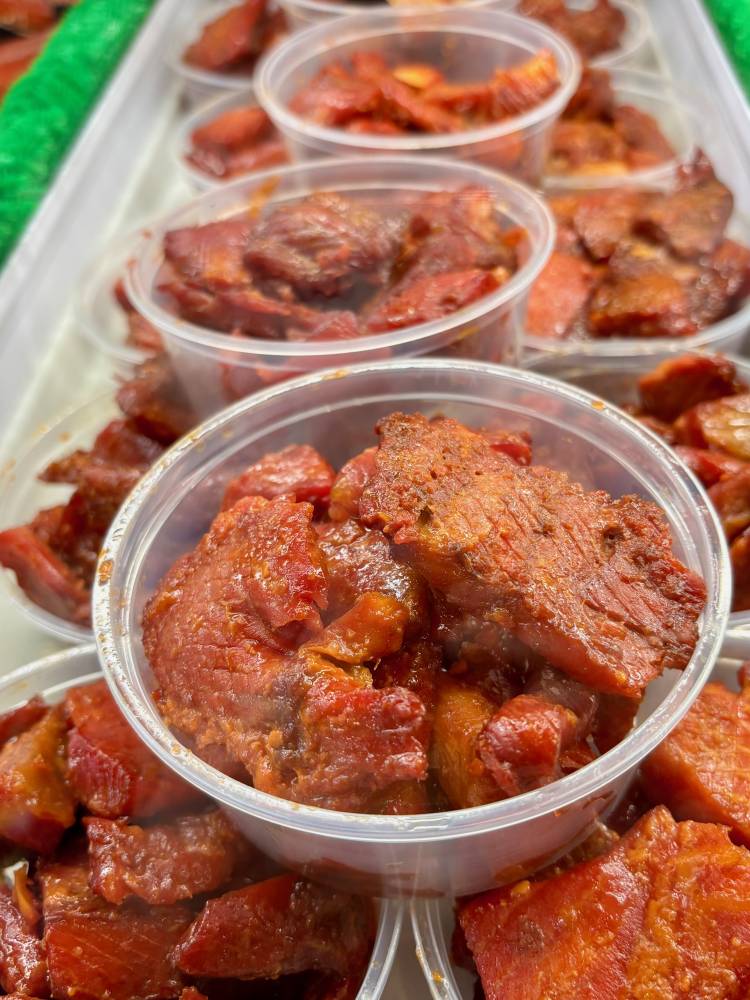
Dessert as a devotion
Dessert on Granville Island isn’t an afterthought. It’s a second act.
The Lemon Square, now a permanent darling after starting as a pop-up, serves bars that flirt between tart and buttery. The tiny squares pack a punch, the sprinkling of desiccated coconut a welcome twist to a classic treat.
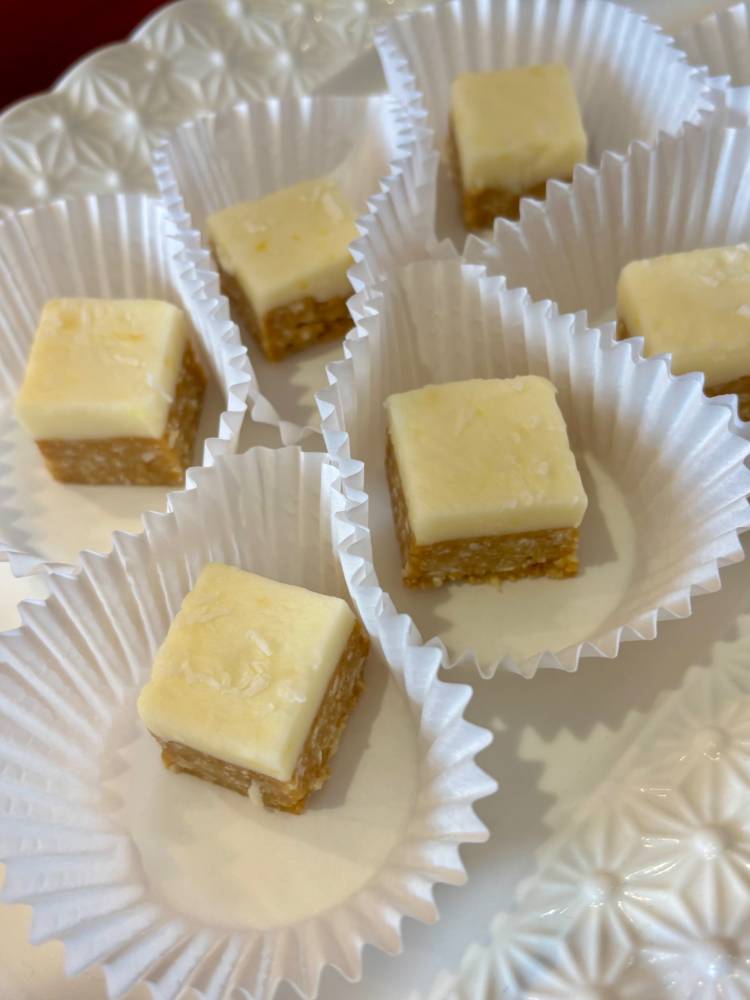
At ChocolaTas, we tasted truffles that felt engineered by love, not logic. Founded by Belgian chocolatier Wim Tas, the brand has won international awards and local hearts. Our group was singlehandedly won over by a lavender-infused bonbon.
The whimsy came in full bloom at Bon Macaron Patisserie. Their flavors were both confusing and delightful: bacon, bubblegum, jackfruit, taro lychee, goat cheese and fig, hibiscus coconut lemon, sake. The salted caramel reminded me of warm baths and good decisions.
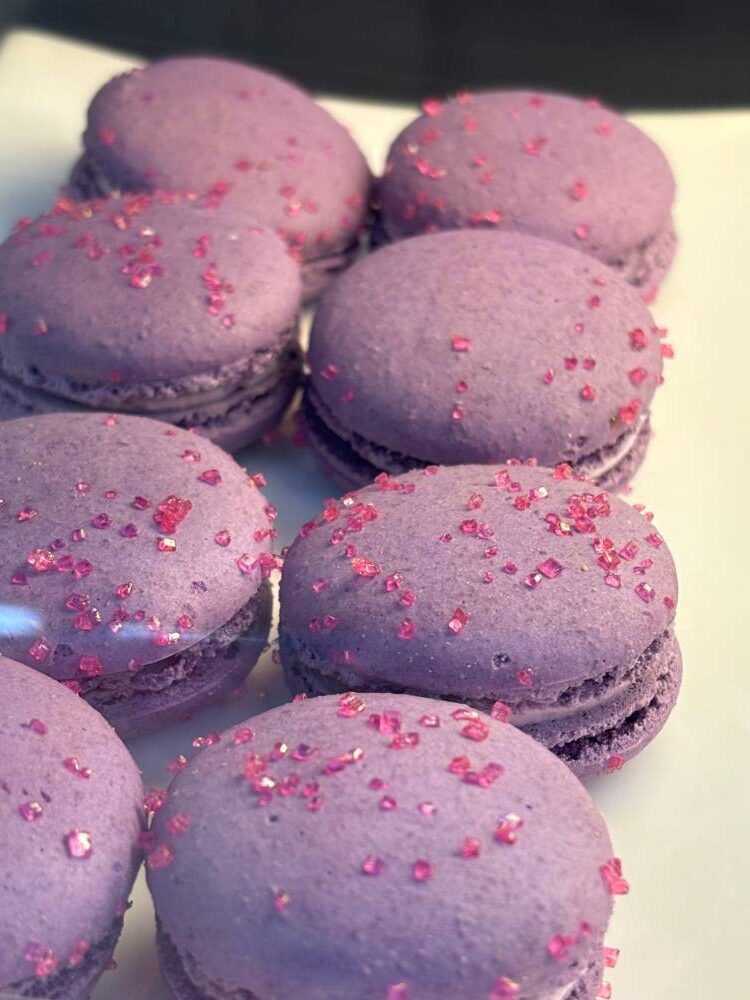
Then, Kasama Chocolate—a name that made all of us Filipino writers smile reflexively. Kasama means companion, presence. Vincent Garcia, a Filipino born and raised in British Columbia, and three of his friends—his kasama—started the small batch bean-to-bar brand in 2015. Their cacaos are grown in Cagayan Valley, in Tuao, the town where Garcia’s father hails from.

Kasama’s flavors, both adventurous and grounded, such as durian, calamansi, goat’s milk, and even a Tanduay Rum collab, have won them awards—15 awards in 2020-21 alone, from the International Chocolate Awards Americas.

The island feeds
Granville Island doesn’t just offer tastes. It offers time travel—into indigenous knowledge, into Vancouver’s industrial grit, into your own palate’s private nostalgia.
You can come for the food. Most people do. But you’ll stay for something else. The way a macaron is made with care. The way a cup of chai is handed to you with a story, and how some flavors make you feel seen.

There is a concept in Filipino cooking we rarely translate: malinamnam. It means delicious, yes, but also layered. Resonant. Full. Granville Island is malinamnam. Every bite feels like it was made with memory, with a hand on your back saying, “Try this. It matters.”
Granville Island doesn’t shout. It simmers. And if you’re lucky, you’ll taste something that reminds you of home—even if you’ve never been here before.









